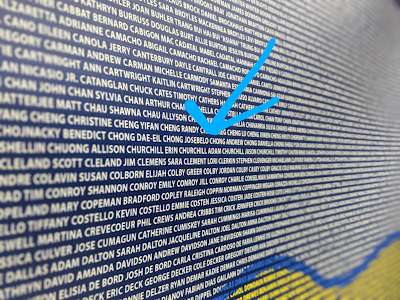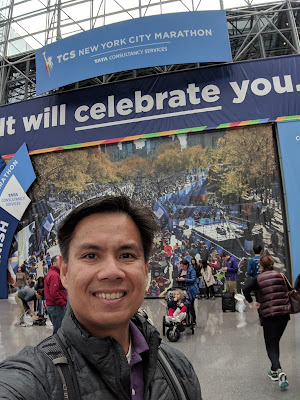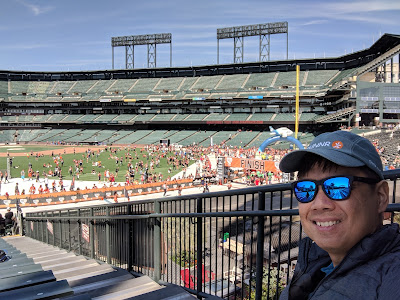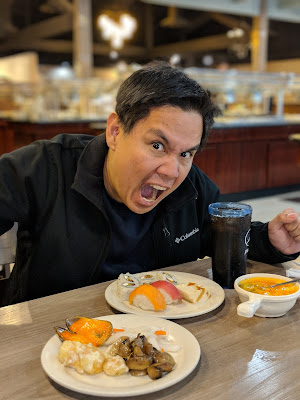 |
| Finisher certificate. |
 | |
| Granular results. |
The time is almost 9 minutes faster than my most recent marathon at New York. On one hand i'm pleased, because after three tries - i finally broke 5 hours. On the other i'm not pleased at all, because i thought/expected that i could come in much faster in "the fastest course in the West," maybe even somewhere in the vicinity of my PR. Oh well. I just console myself with the thought that i successfully did "back-to-back" marathons. After all, it's been less than a month since i ran New York.
As far as running another marathon this close to the previous one, it was probably (most definitely) a bad idea. But i had already paid over a hundred bucks for the CIM entry in 2017, plus another fifty to defer to 2018, and El Cheapo refused to LOSE money by forfeiting outright, or (God forbid!) fork over even MORE money for another deferral. So: i asked my friend Dr. Google how to run a marathon just three weeks after finishing one... and did it. I guess if a non-athlete like me is going to push the envelope like that, i shouldn't complain about my finishing time. (I realize that - in the grand scheme of things - this isn't even REALLY back-to-back, not in the way the triple 7 quest is. But i am a mere mortal.)
 |
| At the finish, with a view of the California State Capitol Building right behind me. Nostrils flared. |
Some race notes:
1. The weather was perfect. I had some concerns about race conditions, given the recent Camp Fire followed by stormy weather, but it was pretty nice on the day of the race itself, starting out at crisp 37 degrees and ending at around 53.
 |
| Heading off to the race, with me decked out in my throwaway sweater and sweatpants. |
2. My legs feel a lot better this time around compared to previous races. Not much trouble climbing up and down stairs on the day after. Unfortunately, in the first 24 hours post-race, there was the issue of a nagging ache at the top of both feet that i literally had never felt before. The only thing i did different at the CIM was that i consciously tried to keep my strike rate (cadence) high. My Garmin says that i successful pulled this off, with a strike rate of around 174-185 spm (target of 180) during my running intervals. Maybe my feet aren't used to that high of a turnover. In hindsight, i should NOT have run the race that way, because it wasn't the way i trained. Something to fix for the next training cycle.
3. Billing CIM as "the fastest course in the West" with a net elevation loss sets up the expectation that it's all downhill. IT IS NOT. In fact, the first half seemed to be composed of a never-ending series of rolling hills. There is one nice downhill stretch somewhere between miles 9-10, which unfortunately ends up in a fairly steep uphill climb. It only seemed to (relatively) flatten out around mile 14 or so.
 |
| Enjoying one of the downhills. |
4. The expo wasn't really anything to write home about. However, similar to New York (perhaps others, too), there was a big wall with the runners' names. I had to squint to find myself with the tiny font that they used, but i was there.
 |
| That's me! |
5. A shade under 8000 is a great amount of runners. Enough people to make it feel like a "real" event, but not enough that you constantly bump into people.
 |
| At the start. That's about half the field ahead of me. A lot, but not too much. |
6. The race felt highly organized from start to finish. I was happy that one could just sit in the (relatively) warm bus up until the start of the race, negating the need to pay for a "VIP" (or similar) tent. Porta-potties were aplenty at the starting line, and it only took me about 10 minutes to use one. I felt very secure with the AMR bikers and cops on motorcycles constantly going back and forth, watching over the runners. I actually liked this race so much that i think i'll do it again next year. Perhaps i'll sign up soon... El Cheapo is definitely tempted by the early sign-up discount.
7. I don't know if i just bonked early, but i could not for the life of me muster enough strength to do a negative split. This is an ongoing issue, and can probably only be fixed by adding some speed to the end of my long runs. At least 700 people who started out in front of me seemed to slow down as well, based on this chart. I finished the first 5K in 6826th place, and finished the whole shebang in 6112th. Still an achievement, hahaha.
 |
| Splits data. |
8. I sometimes wonder if the run-walk-run method is holding me back from being a fast runner. But every time i'm tempted to chuck it and just run continuously, i remind myself how many injuries i picked up in previous years. Contrast that with my performance this year, when i ran 3 marathons with NO INJURIES and minimal aches and pains. Pun intended: it's a marathon, not a sprint. If i can keep running into the next several decades with no injuries, i'll be happy to be a slowpoke. I'm already too old to go out in a blaze of glory, anyway. Truthfully though, i feel that if i stay the course and train consistently, i'll continue to get better/faster anyway. Or so i keep telling myself.
So that's it, my third and final marathon for 2018 in the books. Next stop, Big Sur.
 |
| Running to the finish. |
 |
| Went for some Chinese food immediately following the race. Tastier than the medal, to be sure. |





































